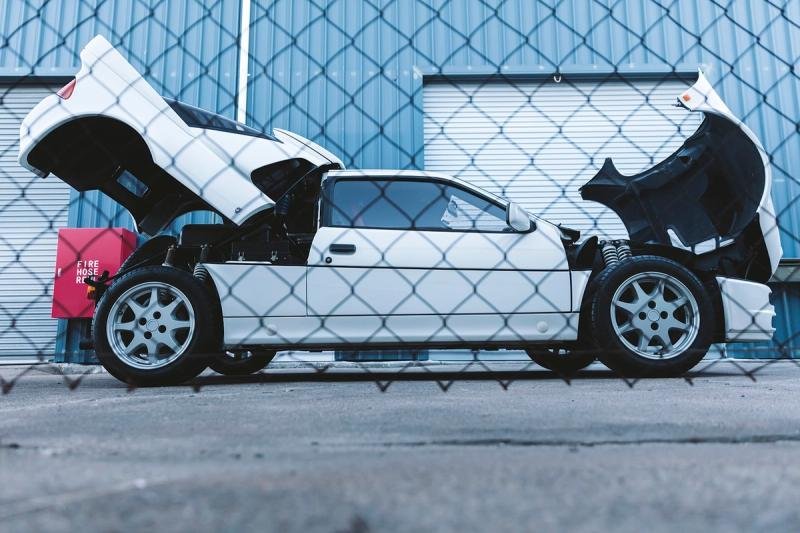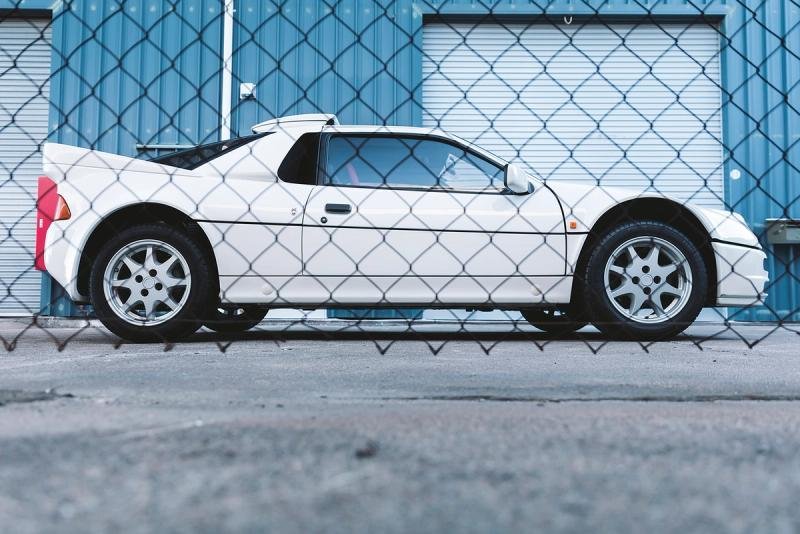Ford RS200
Andrei Shinkarenko likes things that are rare, different and unique. He’s refreshingly left of centre and unashamedly so. I had that impression even before we meet, as I park my car next to ‘Rex’, the dinosaur in his front yard. “Might be Rexona.” He quips as we greet. “We’re not that friendly yet.” Andrei, or Andy, is an engineer. “We’re a different breed,” he explains. “We think differently – genetically, we are created, were not just taught to be engineers. Russians have a long history of engineering. We don’t invent new stuff, we perfect old stuff.”
“I put myself through Uni working as mechanical engineer.” Andy was fortunate enough to land a job with Ifield Engineering. “R.J. Ifield was a God.” He explains. “112 patents – among other things, the hydromantic slipper bearing; it’s the most import thing in hydraulics…. ever.” He goes on to mention a number of other inventions and innovations. He explains them in such detail that, unfortunately, the scope is a little lost on my humble intellect.
Along with his mind bending engineering projects, he has 30 odd cars in his collection that need some miles put on the clock. Like the Ex Stirling Moss 904 Porsche GTS Carrera, the last of the road registered Le Mans cars. An Electron – a Hyundai Getz-based electric vehicle briefly produced by the Australian company, Blade Electric, but killed off due to government-introduced ESC requirements that the company couldn’t meet. The RS200 was developed so that Ford could join the hugely popular Group B rally category. The Escort was no match for the Audi Quattro or Lancia Delta so they needed something truly special to get noticed on the world stage. “I first seen the RS200 along with the Audi Quatro and Lancias on an old documentary called ‘Too fast to race’. It was right at the end of that era that the RS 200 came in.”
The RS200 was a very complex, technologically advanced four-wheel drive car. Power came from a mid-mounted, 1.8 litre, four-cylinder, turbocharged Cosworth BDS engine with a roof-mounted intercooler. To aid weight distribution, the transmission was mounted at the front of the car. This required the power from the engine to go up to the front wheels first and then, be run back again to the rear. The body was designed by Ghia and the chassis was designed by former Formula One designer Tony Southgate. The RS200’s was assembled at the Reliant Plant (yes, those funny 3-wheel cars) because of their experience with assembling fibreglass bodied cars.
“The first one I found was at a museum in LA. They wanted 200k and it wasn’t even going.” The RS200 in question had apparently been parked up without fluids for 25 years, everything had seized – not good. Andy discovered one in New Zealand owned by the Hoffman Ford dealership. They had found it in a barn in America with only 900 miles on the clock. “I’ve only done 70-80 miles since I got it.” Admits Andy. “I got very nervous driving it around, not because it was too quick, I just don’t want anybody hitting me in their clapped out Gemini,” he laughs. “But all that has passed now and I’m comfortable driving it anywhere.” “The first time I took it out, it felt like a dog – like it had major clutch shutter.” Andy spent a good deal of time researching how to fix the issue before a member of the RS200 club suggested an odd fix. ‘It’s nothing to do with the clutch, it’s the spark plugs.’ “I changed the plugs and 100% better. But everything is so, so tight. People blame the car – it kind of feels like the handbrake is on at low speed, you really need to drive that thing.” It’s not just Andy, Chris Harris rates it as the “Easiest car to stall I’ve ever driven.” “The RS200 is quick – record breaking quick. It held the record for the fastest accelerating production car for 12 years – that’s against Porsche, Ferrari, Lamborghini.” The record Andy refers to was accomplished by Stig Blomqvist in an EVO RS200 for a Guinness World run. He set a 0-60mph time of 3.07 seconds. The record stood for 12 years.
The EVO’s were developed a year or so after the RS 200 debuted for the 1986 season. While they had some success, it was clear some upgrades were needed in order to really dominate the category. 24 of the original RS200’s were re-purposed which included an upgrade from the 1.8 BDT engine to 2.1 BDT-E engine capable of anywhere between 600 to 800 horsepower.
Marc Surer, a Swiss Formula One driver, crashed a RS200 against a tree during the 1986 Hessen-Rallye in Germany, killing his co-driver, Michel Wyder instantly. During the second leg of the 1986 Corsica Rally, Henri Toivonen’s Lancia Delta S4 went off the side of the road and plummeted down a ravine. It crashed on its roof exploding on impact. Toivonen and his co-driver, Sergio Cresto were killed instantly. The fire was so intense that the Delta S4 was unidentifiable. In an interview just before the crash he stated; ‘After 4 hours of driving – it’s hard to keep up with the speed. So, with a modern car like this, it’s just impossible to race here. It’s physically exhausting and the brains can’t keep up with it anymore.’ Even though homologation rules stated that 200 needed to be built to be eligible for the category, it’s documented that only 146 cars were ever fully constructed and sold, with the remainder being broken down for spares. The RS200 was but a blip on the scene. Initially, it wasn’t terribly successful and played its part in the demise of Group B. But all things considered, it’s still an amazing piece of history worthy of its cult status. The RS200 ticks all the boxes for Andy, but he is currently testing the waters by offering the RS200 for sale. “If it doesn’t sell, I’ll be happy, the way that car looks. Would I be proud to just have it in the shed? Absolutely.”














